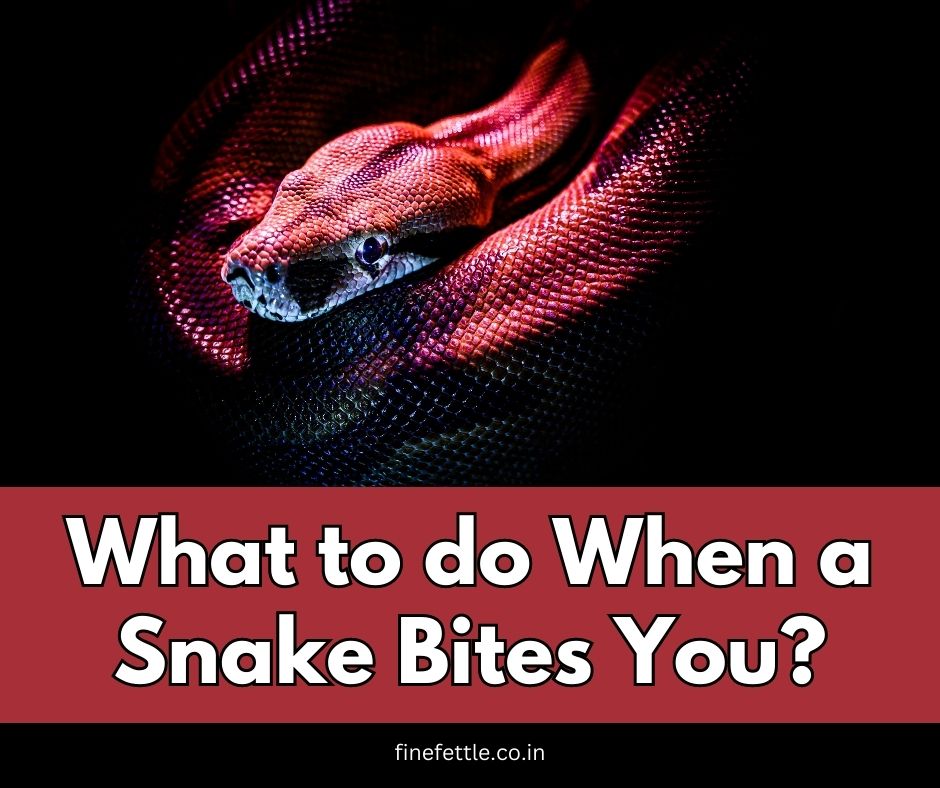
Up to 1.8 million snake bites are thought to happen annually throughout the world, killing anywhere between 20,000 and 94,000 people. In tropical and predominantly agricultural areas, snakebites are more frequent. Numerous snakes and a big population of people coexist in these locations.
According to the World Health Organisation (WHO), India experiences 5 million snakebite incidents each year, with up to 2.7 million envenomings.
According to published figures, there are 81,000 to 138,000 deaths annually. As many as 400,000 amputations and other irreversible impairments are brought on by snakebite envenoming.
Because victims frequently seek non-medical therapy or lack access to healthcare, many snake bites go unreported. It is thought that many snakebite instances go unreported as a result.
From these alarming statistics, it is understood that knowing the right first aid techniques if a snake bites a person or you can be really helpful to keep the situation under control until an experienced doctor is involved. Here are some do and don’ts if a snake bites you.
Symptoms
- A wound with puncture marks
- Around the bite, there may be redness, swelling, bruising, bleeding, or blistering.
- Severe discomfort and tenderness at the biting site
- Diarrhea, vomiting, or nauseous
- Respiration that is labored (in severe situations, breathing may stop completely)
- Low blood pressure, a sluggish pulse, and a rapid heartbeat
- Blurry vision
- A metallic, minty, or rubbery aftertaste
- Increased sweating and salivation
- Tingling or numbness in the limbs or face
- Twitching of muscles
First Aid
- While you wait for emergency medical services to take you to the hospital, administer first aid.
- With the bite in a neutral, comfortable position, lay down or sit down.
- Watch for swelling before removing your rings.
- Use soap and water to clean the bite.
- Dress the bite with a fresh, dry bandage.
- Write the time next to the leading edge of the discomfort or swelling on the skin.
Don’ts
- Never attempt to catch the snake or pick it up. NEVER touch a poisonous snake, not even one that is dead or has had its head severed.
- Do not panic.
- If you have been bitten, seek medical attention as soon as symptoms start to show.
- Never use a tourniquet.
- Don’t use a knife to slash the wound or make any further cuts to it.
- Avoid attempting to extract the poison.
- Never ice the wound or submerge it in water.
- Alcohol should not be used as a pain reliever.
- Avoid using painkillers including aspirin, ibuprofen, and naproxen.
- Apply no electric shocks or alternative treatments.
Which Species Of Snake Bite Prevails The Most?
- In June 2017, the WHO added snakebite envenoming to its list of NTDs with the highest priority. According to the Million Death Study, 45,900 people die each year in the United States from snakebites. The ‘big four’ crawlers — common krait, Indian cobra, Russell’s viper, and saw-scaled viper — account for around 90% of snakebite cases in India. Reduced snakebite fatalities in India would result from effective interventions that included education and antivenom supply.
- The elapid family includes the cobras, mambas, kraits (Bungarus) of Asia, coral snakes (Micrurus) of the Americas, and Australian elapids, which include the coastal taipan (Oxyuranus scutellatus), tiger snakes (Notechis), king brown snake (Pseudechis australis), and death adders (Acanthophis). The Australian elapids are closely related to extremely poisonous sea snakes.
- The saw-scaled vipers (Echis), which are found in Asia and Africa, the Russell’s viper (Daboia russelii), which is found in Asia, the puff adder (Bitis arietans), and the Gaboon viper (Bitis gabonica), which is found in Africa, are all members of the viper family.
- The majority of the Colubrid snake family’s numerous and diversified species lack venom that is harmful to humans.
- However, some species, such as the brown tree snake (Boiga irregularis), the Japanese garter snake (Rhabdophis tigrinus), twig snakes (Dispholidus typus), and twig snakes (Thelotornis), can be deadly. The American garter snake, kingsnake, rat snake, and racer are among the other species of this family that are not dangerous to people.
Snakebite Treatment
Life-threatening conditions are treated initially by the doctor. A sufferer who is having trouble breathing might require a ventilator machine and a tube in their neck. Intravenous fluids and possibly other medications are necessary for shock patients in order to maintain blood flow to their important organs.
- Antivenom: This is a class of medication that boosts the immune system. In cases when it is suitable and available, doctors give it to patients who have severe symptoms. This treatment has the potential to save lives and limbs. Anaphylactic shock, a potentially fatal kind of shock that requires prompt treatment with epinephrine and other drugs, can occasionally result from antivenom allergies or allergic responses. Antivenom might potentially result in serum sickness within 5–10 days of treatment.
- Serum sickness: This is a non-life-threatening condition that produces fevers, joint pain, itching, swollen lymph nodes, and exhaustion.
- Monitoring: Even those who don’t exhibit any obvious symptoms need to be kept under close monitoring for several hours, and some need to be admitted to the hospital for overnight observation.
- Injuries: The doctor cleans the incision and checks for debris or broken fangs. If the person hasn’t gotten a tetanus vaccine in the last five years, they must have one. Antibiotics may be needed for some wounds to help avoid infection.
- Surgery: Rarely, if there is evidence of compartment syndrome, the doctor may need to consult a surgeon. If limb elevation and medication are ineffective, a fasciotomy, or skin incision into the afflicted compartment, may be required by the surgeon. The arm or leg may be saved if this method is used to reduce the increasing limb swelling and pressure.
Conclusion
If a snake bites you, you must act quickly for your protection. First, try to keep your cool and resist going into a panic because doing so will speed up the spread of the poison and cause your heart to race.
Next, remove any limiting things from the affected area as soon as possible, like jewelry or tight clothing. To limit the circulation of the venom, it’s critical to keep the bitten limb quiet and lower than your heart level. Call emergency services or go to a medical facility right away for aid. When dealing with snake bites, act quickly and put your health first because time is essential.
Disclaimer: The information provided in this blog is for educational and informational purposes only. It is not intended to be a substitute for professional medical advice, diagnosis, or treatment.



